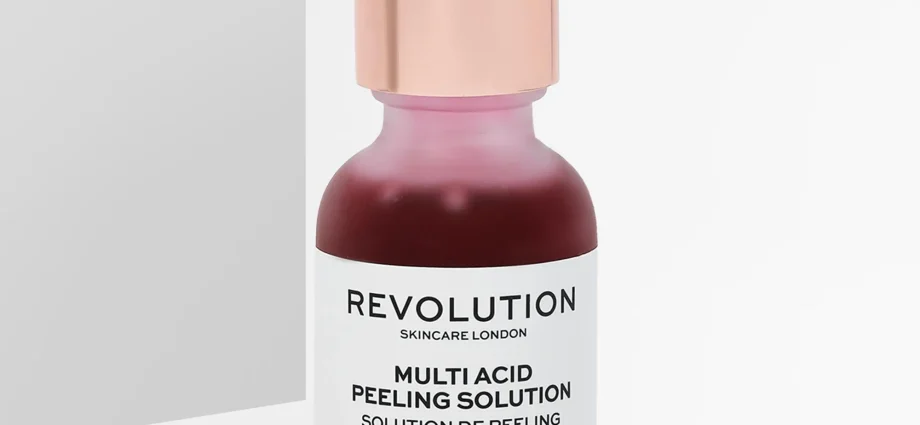Contents
We will tell you what lies under this promising name and how this type of peeling differs from the rest.
What is a multi-acid peel
We may surprise you, but multi-acid peeling is far from new on the beauty market. In fact, this is just a peeling composition, which includes not one, but several acids. There are ready-made recipes (remember the famous Jessner peel, which is over a hundred years old), and individual mixtures compiled by a cosmetologist specifically for a particular person.
Mechanism of action
Any peeling involves targeted damage to the skin, causing the rejection of dead cells (peeling), in place of which new ones appear. The depth of this damage can be different – it all depends on the set of acids, their concentration, pH solution and, of course, the task.
To whom does
Peelings are good for their ability to solve almost any cosmetic problem and can be used even at a young age. The range of problems for which peeling is appropriate is extremely wide.
Dryness and greasiness.
Acne.
Pigmentation.
Wrinkles.
Expanded pores.
Loss of elasticity.
Dullness.
Uneven terrain.
It starts.
Rosacea.
Efficiency
With the right combination of acids and their optimal concentration, success is guaranteed. The only thing you should not count on is the complete elimination of post-acne scars. Although it is possible to make them less noticeable.
What’s in
Acids are generally divided into two groups.
AHA acids, they are also alpha hydroxy acids, which differ in water-soluble properties. These include everyone’s favorite fruit acids that exfoliate dead cells.
BHA – fat-soluble beta-hydroxy acids, including salicylic acid, a powerful keratolytic. Since it has an antiseptic and sebum-regulating effect, it is included in multi-acid peels for oily acne-prone skin.
In multi-acid peels, sometimes only AHAs are combined, there are enough of them to make a mixture for any type and condition of skin, ranging from sensitive to problematic.
There are solutions in which fruit acids are combined with salicylic, Jessner peel is a classic example of this. In addition, peeling products include soothing and moisturizing agents (for example, hyaluronic acid), which soften the aggressive effects of acids. You can read about peeling with fruit acids here.
Let us say a few words about succinic acid, which often occupies the first line in the composition of fashionable multi-acid peels. So this acid does not have an exfoliating effect and is not a peeling agent. But it has undeniable antioxidant and anti-inflammatory properties that accelerate the process of tissue repair. That is why succinic acid is included in multi-acid peels for sensitive skin.
Implementation Techniques
Peeling is applied to clean, fat-free skin with a cotton swab, kept for the prescribed time and washed off with water. This scheme is relevant for professional solutions. With cosmetics, it’s even easier.
Overview of multi-acid peels
The top 5 night peels containing acids included products – the most effective, according to the editors of Healthy-Food.
Glycolic 10 Renew Overnight, SkinCeuticals
This cream combines 10% glycolic and phytic acids. Soothing ingredients are included in the formula to rejuvenate the skin without experiencing discomfort.
Nightly Refining Micro-Peel Concentrate, Kiehl’s
Fruit acids extracted from quinoa, blueberries, citrus fruits, sugar maple, sugar cane, gradually free the skin from dead cells night after night, restoring its youthfulness and smoothness.
Night two-stage peeling for facial skin Visionnaire Crescendo, Lancôme
The acid peel course is divided into two stages: preparatory (includes phytic and fruit acids) and main (based on glycolic 10% and salicylic acids). The effect is impressive.
Tips for aftercare at home
Care after professional peeling depends on the depth of exposure, after the procedure, the doctor will tell you more about it. In general, recommendations for skin care after peeling are as follows:
gentle cleansing with micellar-based mousses and gels;
no scrubs;
alcohol-free tonic with a calming effect;
light moisturizing (but not nourishing) cream or gel with soothing ingredients;
maximum sun protection.
Safety measures
Do not try to repeat at home what the beautician does in the salon or clinic, even if the peeling is “very light”. Such a risk is not justified. The reaction of the skin to a particular acid is unpredictable.










